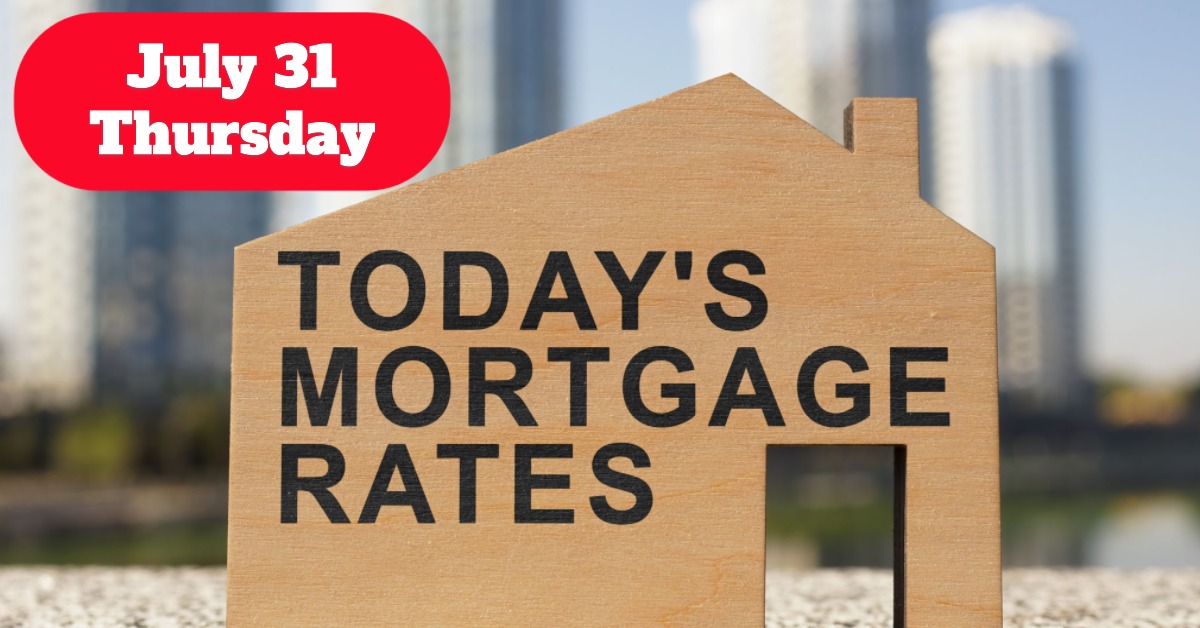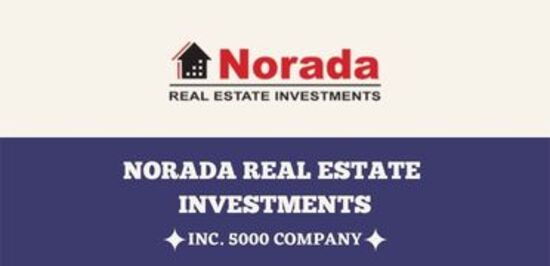Mortgage rates on July 31, 2025, are showing a slight decline for the 30-year fixed mortgage rate, dropping by 2 basis points to 6.84% from the previous week's 6.86%, according to Zillow's latest data. The 15-year fixed rate remains steady at 5.90%, while the 5-year ARM (adjustable-rate mortgage) decreased slightly to 7.63%.
In refinance rates, the 30-year fixed refinance rate fell by 6 basis points to 7.00%, and the 15-year fixed refinance rate also dropped to 5.84%. Overall, mortgage and refinance rates are showing mild decreases or stability after the Federal Reserve decided to hold interest rates steady in July 2025.
Today's Mortgage Rates July 31, 2025: 30-Year FRM Sees a Slight Decline After Fed's Decision
Key Takeaways:
- 30-year fixed mortgage rate down slightly to 6.84% from last week's 6.86%.
- 15-year fixed mortgage rate steady at 5.90%.
- 5-year ARM mortgage rate decreased to 7.63%.
- 30-year fixed refinance rate dropped to 7.00%.
- Fed held interest rates steady in July 2025, impacting borrowing costs indirectly.
- Mortgage rates are more linked to the 10-year Treasury yield than directly to Fed rate decisions.
- Adjustable-rate mortgages (ARMs) may respond more quickly to Federal Reserve rate changes.
Overview of Today's Mortgage Rates
Mortgage rates have been relatively stable this week with minor decreases noted in key loan types. The most popular mortgage — the 30-year fixed-rate loan — is now averaging 6.84%, which is a slight drop of 2 basis points from 6.86% the previous week. This rate is still higher compared to historical lows seen years ago but reflects current economic conditions influenced by inflation, treasury yields, and Fed policy.
The 15-year fixed mortgage rate remains unchanged at 5.90%. Fixed-rate mortgages provide stability for borrowers wanting consistent monthly payments over the life of the loan. ARMs, which adjust rates periodically, show a small decline in the 5-year ARM rate (down 2 basis points to 7.63%).
Table 1: Current National Average Mortgage Rates
| Mortgage Type | Interest Rate | Weekly Change (bps) | APR |
|---|---|---|---|
| 30-Year Fixed | 6.84% | -0.02% | 7.28% |
| 15-Year Fixed | 5.90% | 0.00% | 6.19% |
| 5-Year ARM | 7.63% | -0.02% | 7.92% |
| 20-Year Fixed | 6.61% | +0.23% | 7.12% |
| 7-Year ARM | 7.56% | +0.80% | 7.81% |
This table shows that while the 30-year fixed and 5-year ARM rates ticked down, some other products like the 20-year fixed and 7-year ARM saw modest increases.
Refinance Rates as of July 31, 2025
For homeowners considering refinancing, the average 30-year fixed refinance rate dropped from 7.06% last week to 7.00% today—a 6 basis points decrease. This slight decline could provide some relief for homeowners looking to reduce monthly payments or shorten loan terms by refinancing. Likewise, the 15-year fixed refinance rate fell by 6 basis points to 5.84%, and the 5-year ARM refinance rate decreased to 7.87%.
Table 2: National Average Refinance Rates
| Refinance Type | Interest Rate | Weekly Change (bps) |
|---|---|---|
| 30-Year Fixed Refi | 7.00% | -0.06 |
| 15-Year Fixed Refi | 5.84% | -0.06 |
| 5-Year ARM Refi | 7.87% | -0.04 |
These refinance rate changes reflect mild market adjustments but show a general downward trend in borrowing costs for refinancing, which could encourage some borrowers to explore this option.
Federal Reserve's Role and Its Impact on Mortgage Rates
In July 2025, the Federal Reserve decided to hold the federal funds rate steady at 4.25% to 4.5% for the fifth consecutive meeting. Although there was some speculation about a potential rate cut, the Fed maintained its current level citing ongoing concerns about inflation and employment data (CNBC, Fox Business).
How this matters for mortgages:
- The federal funds rate mainly influences short-term interest rates like credit cards and personal loans directly.
- Mortgage rates, especially fixed-rate loans, are more indirectly influenced and tend to follow the 10-year Treasury yield's movement. Investors' expectations around inflation and economic growth weigh more heavily on mortgage rates.
- When the Fed holds rates steady, mortgage rates often remain stable or show slight movements reflecting broader economic factors rather than abrupt changes due to Fed policy.
- For ARMs, a higher federal funds rate can lead to increased rates when adjustments occur, as these loans are tied more directly to short-term interest rates.
Thus, today's small decrease in mortgage and refinance rates is less about the Fed's decision and more about ongoing market adjustments and investor sentiment.
Related Topics:
Mortgage Rates Trends as of July 30, 2025
Mortgage Rates Predictions for the Next 30 Days: July 22-August 22
Breaking Down Mortgage Rate Trends by Loan Type
- 30-Year Fixed Mortgage: Most homebuyers choose the 30-year fixed mortgage for its predictability and manageable monthly payments spread over three decades. At 6.84%, this rate has nudged down slightly over the last week but remains elevated compared to historical lows of around 3% to 4% seen before 2022. This reflects inflation control efforts and economic uncertainty.
- 15-Year Fixed Mortgage: The 15-year fixed mortgage shows stability at 5.90%. This loan term offers faster principal repayment and lower total interest paid versus the 30-year fixed but usually comes with higher monthly payments, appealing to borrowers who want to build home equity faster.
- Adjustable-Rate Mortgages (ARMs): The 5-year ARM declined slightly to 7.63%. ARMs often start with lower initial interest rates but adjust periodically after a fixed period based on an index plus a margin. Thus, they can be sensitive to interest rate changes, especially short-term rates influenced by Fed policy.
An interesting note is the 7-year ARM rate increasing by 0.80 basis points this week, signaling some variability in that segment of the market.
Example Calculation: Monthly Payment Impact
Let's compare monthly payments for a $350,000 loan amount under different current rate scenarios to illustrate the cost differences.
| Loan Type | Interest Rate | Monthly Principal & Interest Payment* |
|---|---|---|
| 30-Year Fixed | 6.84% | $2,269 |
| 15-Year Fixed | 5.90% | $2,866 |
| 5-Year ARM (est.) | 7.63% | $2,533 (initial period) |
*Calculation based on principal and interest only, excluding taxes, insurance, or other costs.
This example shows the trade-off between loan term and interest cost. The 15-year fixed has a higher monthly payment but less overall interest paid, whereas the 30-year fixed is lower monthly but higher total interest.
Understanding the Weekly Rate Changes and Why They Matter
Mortgage rate movements tend to be incremental and influenced by many factors:
- Investor demand for U.S. Treasury securities: Higher demand lowers yields, which can lower mortgage rates.
- Inflation expectations: When investors expect inflation to rise, yields on 10-year Treasuries rise, pushing mortgage rates higher.
- Economic indicators: Job growth, consumer spending, and GDP all influence market sentiment and mortgage pricing.
- Fed policy statements: While the Fed directly controls short-term rates, its communications and economic outlook influence long-term rates indirectly.
Government-Backed Loans
Government loans such as FHA and VA loans, designed to help specific homebuyers, have their own rate trends:
| Program | Rate | Weekly Change |
|---|---|---|
| 30-Year FHA Fixed | 7.05% | Down 0.36% |
| 30-Year VA Fixed | 6.32% | No change |
| 15-Year FHA Fixed | 5.63% | Up 0.12% |
| 15-Year VA Fixed | 5.84% | Down 0.01% |
Rates here reflect program terms and risk levels, with VA loans generally lower due to government guarantees.
Market and Personal Experience Insights
Having observed mortgage market cycles, these small weekly rate shifts are quite typical. The slight declines in fixed-rate loans this week might encourage some buyers and refinancers who have been waiting for a dip. However, given the Fed’s cautious stance and inflation concerns, I anticipate mortgage rates will stay within a narrow range in the coming weeks unless there’s a significant economic surprise.
The relative stability in the 15-year fixed and moderate changes in ARMs also suggest borrowers are balancing the cost against flexibility and term length carefully.
Secure Long-Term Returns in Rental Hotspots
With mortgage rates staying elevated throughout 2025, investors are turning to cash-flowing properties in high-demand rental markets to protect their capital and build long-term wealth.
Norada Real Estate connects you with fully vetted, turnkey investments in top-performing U.S. cities—so you can start earning from day one.
FRESH INVENTORY AVAILABLE THIS MONTH!
Speak with an experienced Norada advisor (No Cost):
(800) 611-3060
Also Read:
- Will Mortgage Rates Go Down in 2025: Morgan Stanley's Forecast
- Mortgage Rate Predictions 2025 from 4 Leading Housing Experts
- Mortgage Rate Predictions for the Next 3 Years: 2026, 2027, 2028
- 30-Year Fixed Mortgage Rate Forecast for the Next 5 Years
- 15-Year Fixed Mortgage Rate Predictions for Next 5 Years: 2025-2029
- Will Mortgage Rates Ever Be 3% Again in the Future?
- Mortgage Rates Predictions for Next 2 Years
- Mortgage Rate Predictions for Next 5 Years
- Mortgage Rate Predictions: Why 2% and 3% Rates are Out of Reach
- How Lower Mortgage Rates Can Save You Thousands?
- How to Get a Low Mortgage Interest Rate?
- Will Mortgage Rates Ever Be 4% Again?



